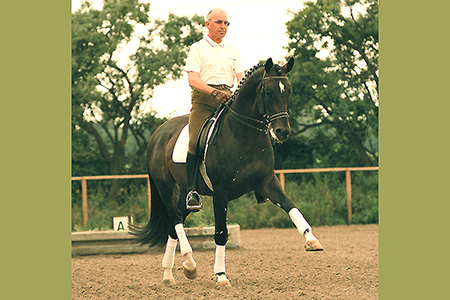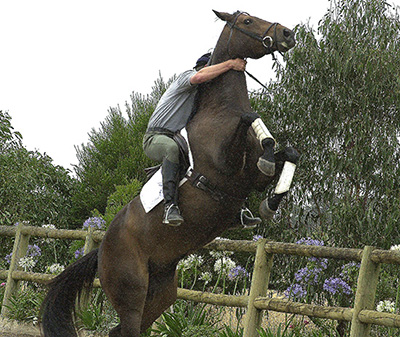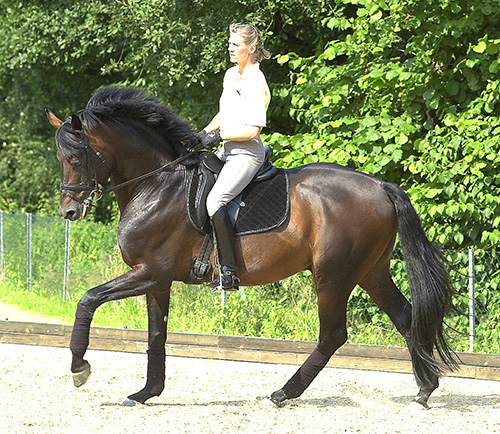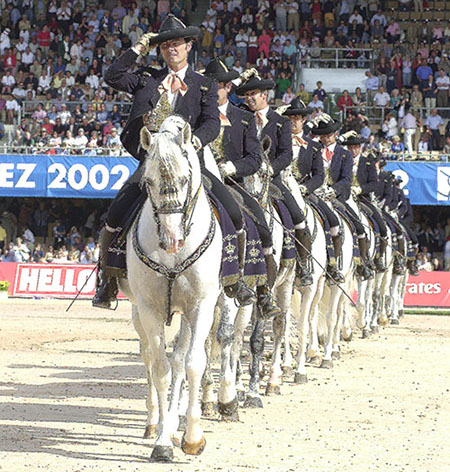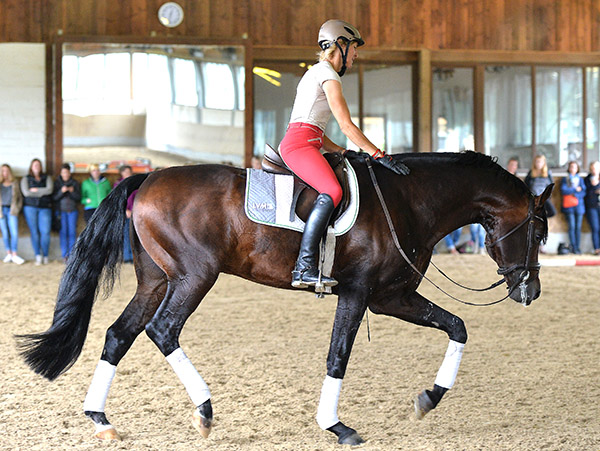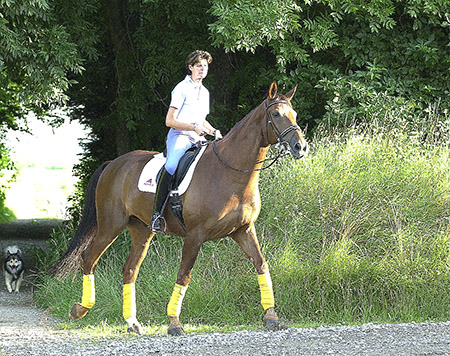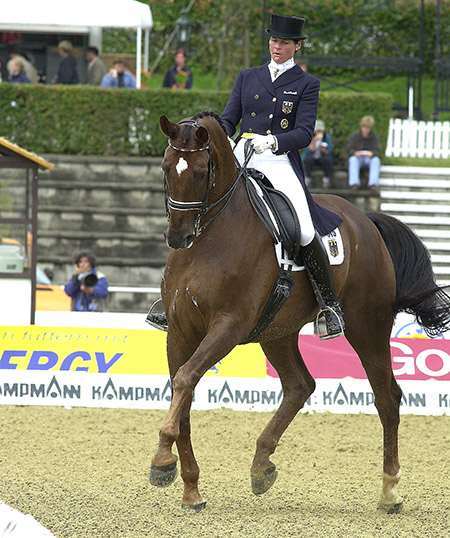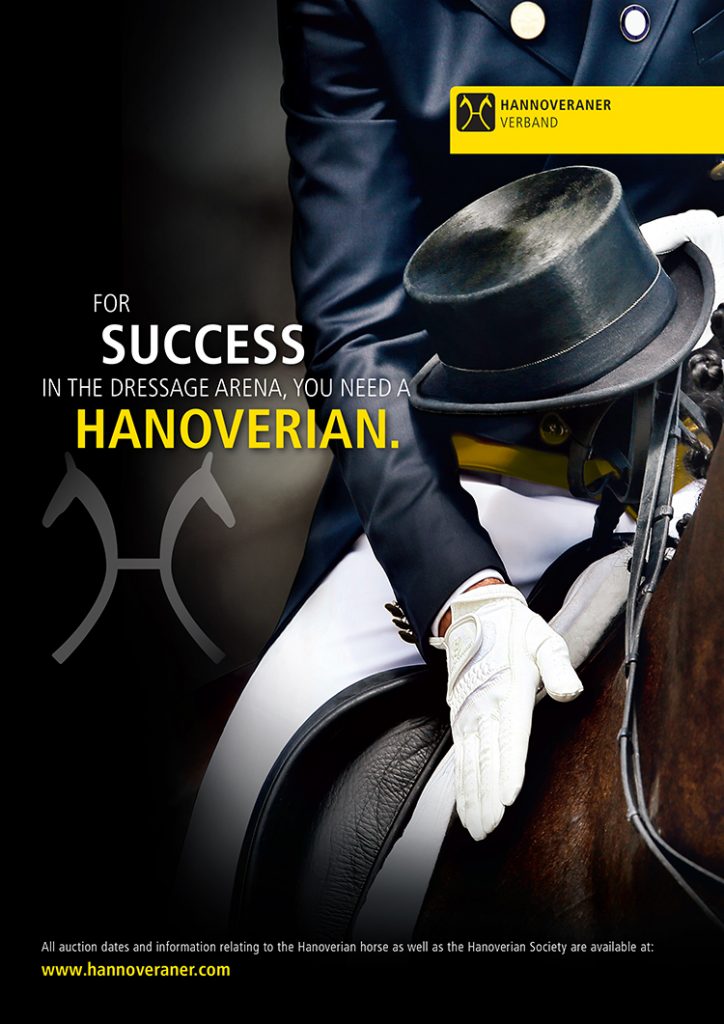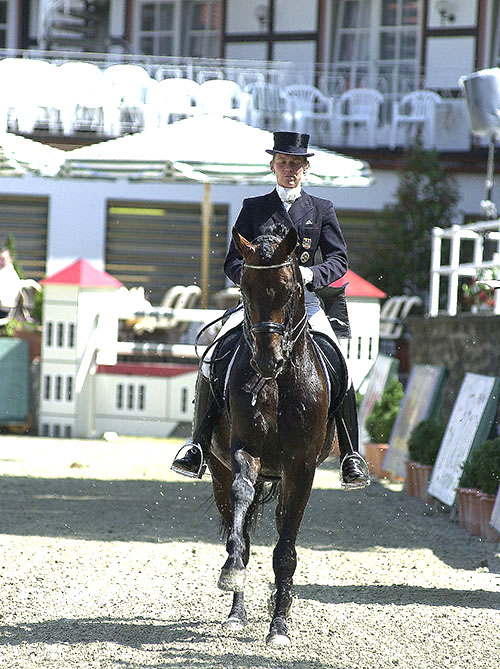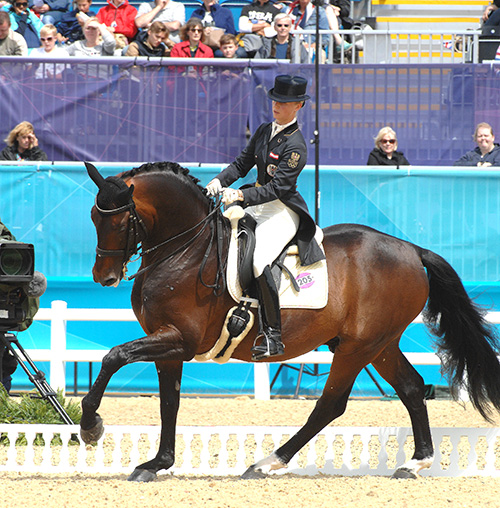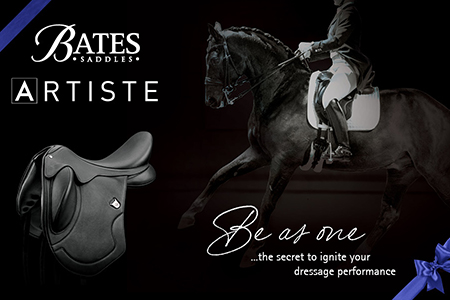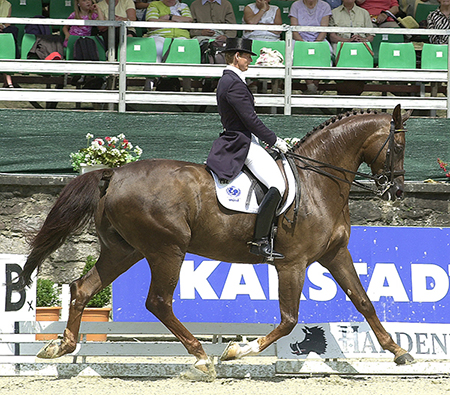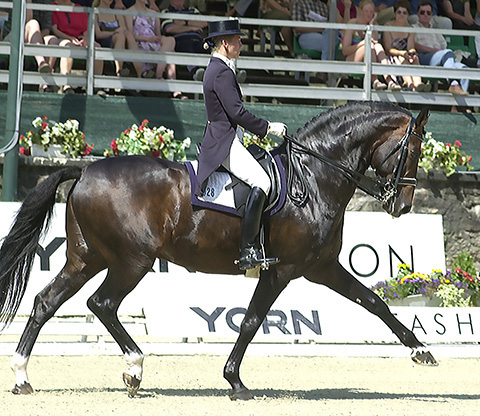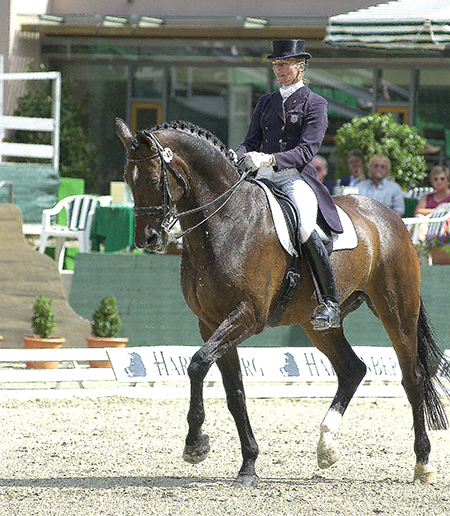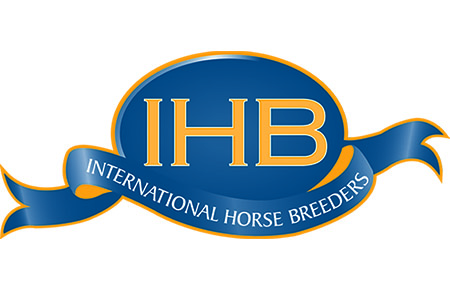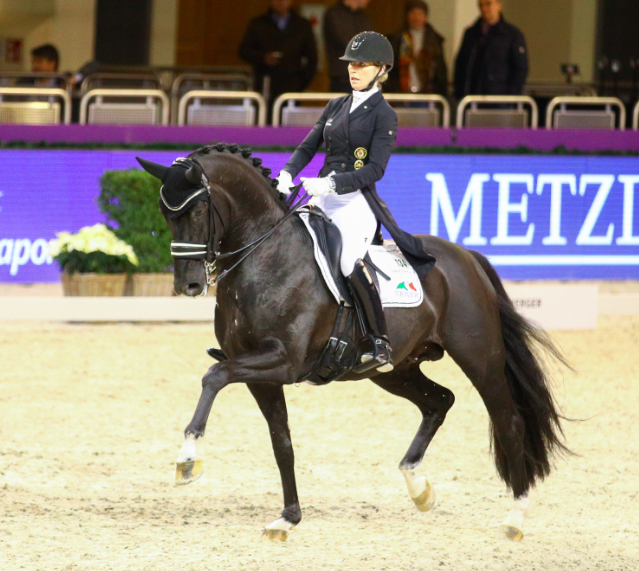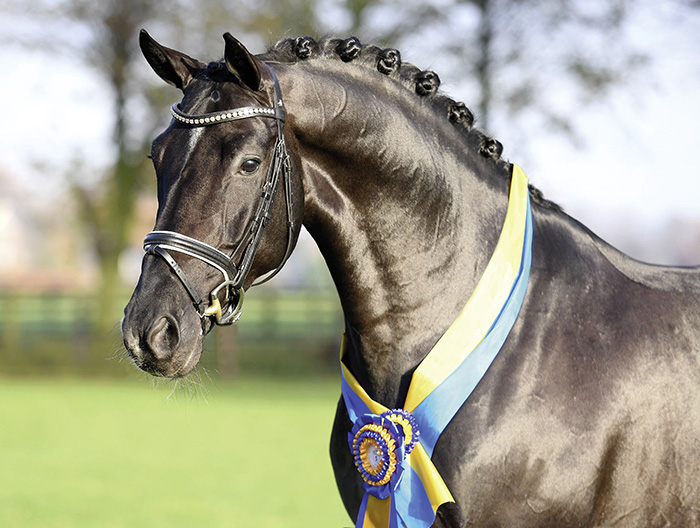The roots of straightness – What it is and how to achieve it…
by Erik Herbermann
The subject of straightness is one which rightfully pre-occupies all serious horsemen. It is one of the most fundamental elements which must be addressed if our work is to be correct, and thus progress favourably. What is straightness, and how can we best assure its integral, dynamic presence in our horses?
In order to better understand straightness, let’s briefly begin by sifting out what some of the common causes of crookedness are.
For most healthy, sound horses, crookedness seems to be a universal fact. Many theories have been proposed to try to explain this phenomenon, such as the way in which the foal lies in the womb during gestation; the asymmetrical distribution of the internal organs, particularly the heart, or the asymmetrical proportions of the skeleton.
Any of those ideas may have credence and could, combined or individually, play a more or less significant rôle in crookedness. The most apparent source of crookedness however, and one which can readily identify, is the rider’s natural, inborn preference for one hand over the other. This can have much to do with greater physical strength of that side of the body as with a higher development of that half of the brain, which regulates the preferred side.
We can possibly better understand how the horse might feel about this topic if we take a closer look at our own one-sided habits. As an experiment, get on a bicycle and try to make tight turns in both directions. Or try to use the ‘other’ hand for the myriad of normal daily functions such as brushing your teeth, slicing a lettuce, dealing cards or throwing a ball. You will quickly come to realise how very awkward and clumsy things feel, and just how much careful concentration is needed to do these simple acts with the ‘wrong’ hand.
Let’s for a moment continue with this ‘rôle reversal’ and contemplate the following hypothetical situation. Imagine that somebody were to stand over you, determined to teach you to become ambidextrous. You are ordered to copy a page from a book and write each successive sentence, one with your ‘good’ hand, and one with the ‘wrong’ hand, alternately.
But each time you make sincere attempts at writing with your more difficult hand, the insensitive, self-righteous person begins to insult you, whacks you with a ruler and digs it menacingly into your ribs because your writing is so illegible, ugly and slow. It doesn’t take much intelligence to deduce that you would soon cringe at the thought of changing the pen to the difficult had, that you would become physically tense, and brace yourself in anticipation of the impending barrage of mental and physical abuse.
Conclusion: You obviously would not progress. You would rightfully dislike and distrust your ‘teacher’. You would likely become quite neurotic about your ‘difficult’ side.
Armed with the above example, it is clear that the rider should avoid making a big issue about the horse’s one-sidedness. It cannot be successfully eradicated by any direct or tough action. It is a very deep rooted, all pervading, reality. And though we can attend to the most obvious facets (crooked tracking) quite easily, only through daily patient and thoughtful work on both hands in the school will the horse gradually approach the ideal of ambidexterity over the years.
The Conditioning of Straightness
True straightness can only be approached when managed in conjunction with the other elemental structures of riding in which it is inextricably housed: forward and calm.
With the exception of calmness, which can be present by itself, neither forwardness nor straightness can exist without the inherent conditions of all three points being wholly present. A brief description of these concepts follows:
Forward
The supple, balanced horse going actively in a correct, even rhythm. An unconstrained, fluid motion, neither rushing nor lazy. It is the basis on which all honest work is built.
Rushing means the horse is moving in too fast a rhythm; that it is chasing, tense, unbalanced on the forehand.
Lazy means the horse may well be in correct rhythm, but isn’t active from behind; a dull, expressionless, unbalanced motion.
Calm
The horse is calm when it is mentally at ease, in a cooperative, unagitated state of mind, whereby it allows its energies to be usefully directed by the rider, It does not mean that the horse is a dullard.
The horse is not calm when adversely affected by outside stimuli and this includes the rider, is ‘high’ from being in the stall for an extended period (over-feeding of grain combined with insufficient work) and when it has a nervous temperament.
Straight
- Straight work is generally referred to as ‘work on a single track’ (but see below).
- A horse is straight when its hind feet travel in the same path as its front feet.
- Within the above requirements, the horse’s spine and neck must also be bent exactly on the form of the line being ridden.
- True straightness further requires the horse is correctly ‘on the aids’, that through suppleness and activity the horse stretches for, and accepts, both sides of the bit equally, that it works equally well on both hands through all school figures and exercises. A genuine state of self-carriage in which both the lateral (side-to-side) and longitudinal (front-to-back) pairs of legs become equally loaded, i. e. balanced.
- The volte (about 16-18 feet in diameter) is the smallest curved line on which the horse is able to form its body. It is, therefore, the natural limit of ‘single-track’ work. If the rider wishes to make smaller turns, the correct two-track work must be used, culminating in turns on the haunches.
Each one of the points – 1, 2, 3 and 5 – is in itself extremely important. But, if we take the concept of straightness to its ultimate academic limits, it is significant to note that the dynamic breadth of point 4, when truly present, automatically encompasses all the other points.
The horse must always be academically straight regardless of the exercise or school figure, even in two-track work. It is a broad field and much experience is necessary to fully appreciate all the ramifications of point 4 and of dynamic straightness in general.
The Causes of Crookedness from Outside Influences
Tension is a major contributor to crookedness. Like crookedness, tension should never be ‘attacked’ directly – though God only knows many riders foolishly pit their brawn directly against the horse’s tension (stiff side) on a regular basis.
To go blatantly against tension will only worsen and ingrain it. To be able to dissipate those tensions caused by any manner of outside influences can be challenging enough. It is clearly not in the rider’s interest to be an added source of tension for the horse.
The main ways in which riders produce or perpetuate tensions in the horse are:
* the rider’s fear or anxiety
* the rider’s own physical tension or stiffness
* the rider’s crookedness
* the rider making a big deal about anything
* any direct confrontation with the horse
* blunt, harsh or insensitive use of the reins
* unfair or unreasonable use of the stick or spurs
* inadvertent unbalancing of the horse, usually caused by the rider’s own lack of balance, or an unreasonable or inappropriate choice of school figures or exercises
* insufficient preparation: each and every day a sound program of loosening and suppling exercises must be used before more difficult work is requested
* pressing the horse too quickly into advanced work
* too high a degree of collection for the state of the horse’s actual level of training
The Antidote for Tension
Many riders seem to have a whole shopping list of suppling exercises and ostensibly execute them ‘to the letter’, yet they often fail to produce sound results because they tend to give the horse’s state of mind far too little regard. This brings us to the concept of calmness. It must be realised that most manifestations of physical tension come from the horse’s mental agitation: the lack of calmness.
The only strictly physical sources of tension are:
* pain anywhere in the horse which will show itself as ‘pottery’ or stiff gaits or lameness
* ill health, such as colic, which can result in tight, drawn up stomach muscles, and/or loss of balance, regardless of the reason.
So, barring any such physical problems it is clear that the rider must learn to deal with and understand mental calmness. Only when the horse can be kept in a quiet, accepting frame of mind can honest and useful work begin.
The prime ingredient of the horse’s calmness is its implicit trust in its rider. Trust much be earned. It can only be established over time through careful, thoughtful work and respect for the horse.
To secure and build on this confidence we must try to avoid wandering too far afield from the horse’s comfort zone, that area of work with which the horse is well versed. Patient repetition and only gradual increases in demands are the hallmark of good training. If we carelessly press the horse too often or too far beyond its comfort zone, our work will not be well grounded and we risk losing the horse’s trust.
Trust, and its by-product calmness, give way to one of the most gratifying aspects of horsemanship: the horse’s own willing cooperation. This is something seldom experienced by riders whose superficial ambitions lead them to make immoderate demands on their horses.
A horse who is continually over-faced in its training will never offer its rider anything, and all the work can only be achieved through force or the constant fear of pain. Not only does such poor work cause tension and much evasive crookedness, it is also a sizeable contributor to silliness and shying.
next comes the detection of Crookedness
How can the Rider detect Crookedness from the saddle?
Before any rider can hope to chip away effectively at the horse’s crooked tendencies, an adequate level of personal ambidexterity must first have been achieved. Furthermore, the seat and position should already be fairly well developed. Both seat bones and the pubic crest must have found their place solidly on the saddle at all times, and any tendency towards collapsing in either hip should have been entirely eradicated.
Unless the rider can sit squarely and well balanced in the saddle, and can control precisely at will the degree of weight in either seat bone, substantial headway in straightening the horse cannot be reasonably expected.
Once the steady seat is developed, the rider can start to feel the more subtle signs of the horse’s one sidedness. The main ways in which the horse reveals its crookedness to the rider are:
* direct resistance against one rein
* heavier weight in one rein, the horse is more difficult to bend in that direction
* heavier weight, bulging or leaning against one of the rider’s legs
* an overt swinging-out of the hindquarter to one side
* a bulging out of the shoulder in the opposite direction in the hindquarter
* the horse’s back is higher under one seat bone and feels ‘dropped’ out from under the other. The saddle tends to slip towards the dropped side
* any warping or kinking of the neck, one ear is carried lower than the other
* a more awkward-feeling gait on one hand in the school
The horse may be showing any number of these points, in any possible combination. Also, the degree of severity can range from very subtle to glaringly evident.
Once we have adequately come to grips with our own suppleness, balance and ambidexterity, have become adept at maintaining a trusting and calm horse, and have learned to avoid causing tensions ourselves, we can successfully begin to deal with the ungarbled issue of basic and natural one-sidedness.
How Can We Best Teach Our Horses Ambidexterity
The main guidelines for straightening the horse and teaching ambidexterity:
* forward riding: ride crookedness out the front
* correct bending: teach the horse to bend by lengthening the outside of its body
* seat bone and leg obedience
* ride on both hands in the school equally; generally, do not ride more on the difficult side
* frequent changing of the rein
* use diagonal aids to effect straightening
* use counter exercises
* use suppling exercises
more on Forwardness follows
Let’s take a closer look at each of these points.
In all our work, one aspect should always rule – forwardness! Forwardness is the matrix which bears within itself: balance, the unity of hindquarters and forehand, the solidity of direction, and most importantly, it results in the purity of the three basic gaits (our chief guideline for the correctness of all our work). It should be a matter of highest priority to learn what pure, balanced gaits feel like, and to be ever watchful to maintain their quality regardless of the work or exercises we do. This holds particularly true during our continuous attempts to develop straightness in the horse.
Correct bending is a subject which by itself could occupy a sizeable article. But in order to avoid straying too far from the topic at hand, only the most fundamental elements will be addressed.
Correct bending is based on the horse’s willingness to let go of, and stretch, the outside of its body. This is achieved by having the inside seat bone forward and with a bit more weight in it (hips parallel to the horse’s hips). The rider’s inside leg must act just behind the girth, the outside leg about a hand’s breadth further back.
While emphasising the forwardness of the gait, passively hold the inside rein, and have a giving attitude with the outside rein, but don’t lose the contact. The upper body should be turned inward from the waist (shoulders parallel to the horse’s shoulders). In this way the inside rein will automatically have more weight in it. While riding well forward, the rider should patiently wait for the horse to discover how to free itself from the heavier pressure of the inside rein by giving through its body. The rider may encourage the horse by using a kneading pressure with the inside leg. One can also keep the inside rein alive by actively feeling the rein leather. This should not degenerate into any active tugging or backward working of that rein (going directly against the horse’s resistance).
Only once the horse consistently yields to the bend by this method then the bending concept can be gradually transferred more to the seat/leg and the outside rein. Don’t forget the importance of immediately equalising and neutralising the rein pressure the moment the horse has yielded to bending aids. Ride forward.
With the above work, the rider will already have started to teach the horse how to obey the seat and leg. But one could further establish the horse’s responsiveness with an occasional turn on the forehand or some steps of leg yielding.
Use these exercises sparingly however, as just a few moments here or there usually suffice. Let most of your work be forward and on a single track.
Further useful exercises, which lead to better responsiveness to the legs, are:
- the increasing and decreasing of the circle and b. riding straight lines in ‘position’ (a bend through the body) and counter- position. The horse must demonstrate straight tracking on all school figures, even when its body is bent while going on ruler straight lines.
Only once the horse has begun to bend itself equally to both sides in single-track work can further engagement and suppling be usefully implemented through shoulder-in and counter shoulder-in.
The length of time in which the horse can be expected to go in ‘position’ on straight lines, or in shoulder-in, should be limited within the bounds of its willingness to continually go freely forward. Learn to stop doing such exercises before forwardness is lost.
To construct a valid gymnastic program it is a good rule of thumb to work the horse with equal time on both hands in the school. This brings home the bacon much better than endless grinding on the weaker side. It is also best to change the rein quite often, about once every few minutes and possibly more often yet. By keeping the program fresh with frequent changes of direction, the horse has less opportunity to set itself against the rider’s guidance, and it will be more likely to learn how to engage its difficult side honestly. Take care not to change the rein so often however that it becomes a source of interference to the general smoothness of the work.
The straightening of overt crookedness requires a careful and sensitive balancing and interacting of the full spectrum of our aids: seat/weight, legs and reins. The main principle however is based on the diagonal giving of aids. The reins in this process generally act passively, and the rider’s main intention should be to line-up the shoulders with the hindquarters.
We should generally avoid pushing the hindquarter around, to line up with the shoulder because it is a loose and weak solution, which can lead to fish tailing and wobbliness. Above all, it is not a forward direction solution.
Let’s imagine that you’re travelling on a straight line on the left hand in the school and the horse is showing crookedness by swinging its hindquarters to the left and bulging its shoulder to the right. It is resistant to the right rein, and bends readily to the left. In this case, the horse is not engaging its left hind leg, and is also not up to, or stretching for the left rein.
To correct this, the rider should take on a seat and position for bend right. The right leg should be forward, close to the girth. The left leg should be held a hand’s breadth behind the girth (this may be exaggerated a bit). While riding forward, gently straighten the neck, and contain it steadily between the reins, stabilising it quietly onto the withers and shoulders.
This strengthening of the neck should be achieved by the same method as described above in the section on bending. Now with the right rein passively containing the shoulder, the right leg pushes the horse’s body and shoulder diagonally over towards the left rein. The rider’s left leg prevents the hindquarters from going further to the left, while also encouraging the horse to go forward and engage its left hind leg.
In extreme cases of crookedness, the left rein may be opened away from the neck by 30 centimetres or more, until the horse begins to line up its body better and commences to lead its hind legs more evening because of the forward riding. Obviously the reverse of the above would be implemented if the horse were to be crooked in the opposite direction.
Such correcting of crookedness is a gradual process. At first the horse will depend considerably on the rider’s repeated intervention to maintain its straightness. But if the rider learns to neutralise, time and time again, when the horse has responded to the straightening aids, it will gradually learn to maintain that straightness (even loading of its legs) more by itself.
Straightness will have been approached when the horse no longer constantly depends on the rider, and allows itself to be guided through all school figures and exercises with only minimal reminders to remain straight. This is the basis for advancement and real work when the horse has understood how to take on the responsibility for moving in a balanced, carrying way, independent of the rider’s constant intervention.
It should be interesting for any rider to experience just how skillful he or she can become at using their own less developed side (as suggested earlier), if a consistent and careful daily effort is made to develop it. At first progress may be slow, but with some persistence, things soon become easier – the horse really is no different.
This article first appeared in Dressage & CT, reproduced with permission.
Breeding your own dressage star? Go to www.ihb.com.au and look at the amazing range of top European bloodlines that are available here in Australia – Stallions like Total Hope and many, many more!

